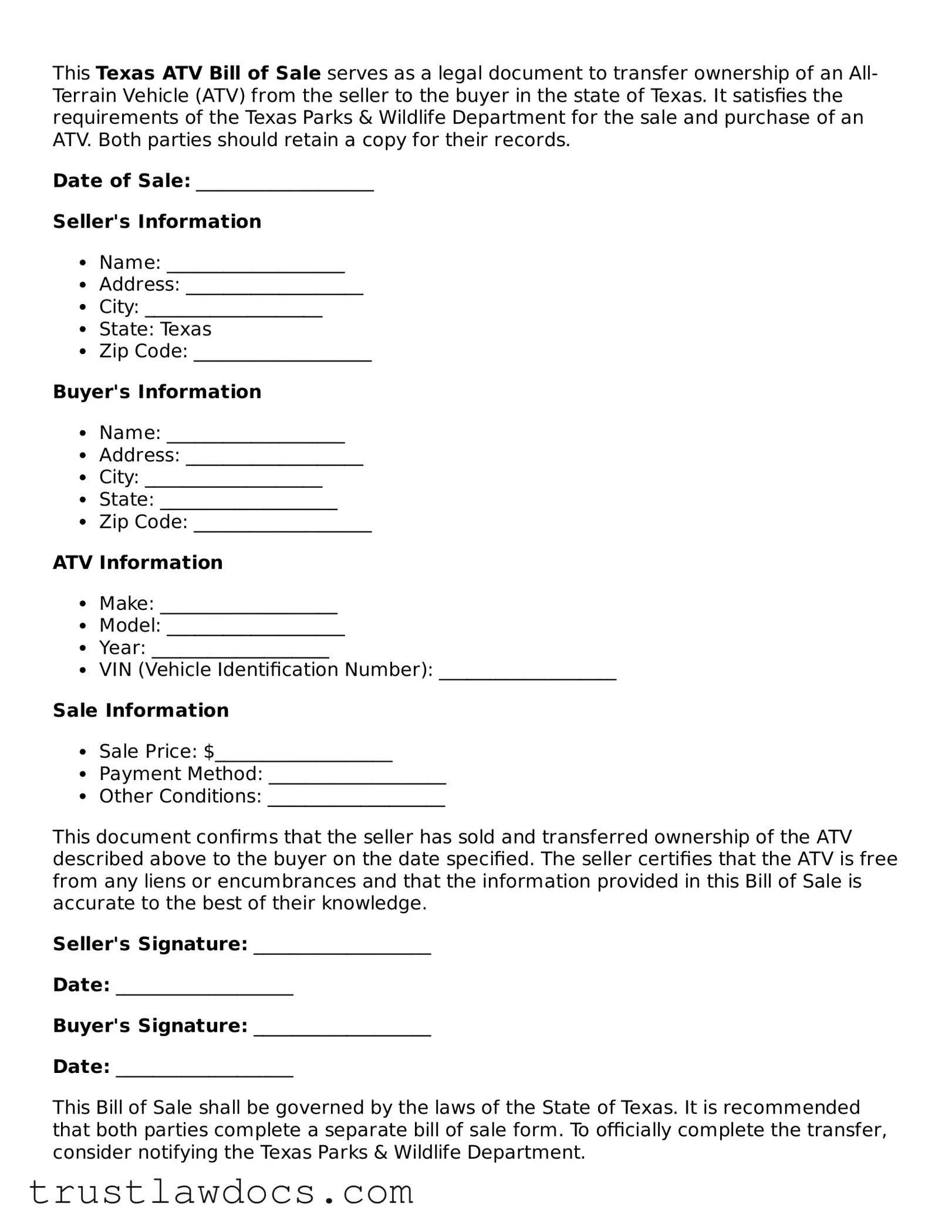A Vehicle Bill of Sale closely mirrors the Texas ATV Bill of Sale form in its fundamentals. Both documents serve as concrete evidence that a transaction has taken place, detailing the transfer of ownership from seller to buyer. They typically outline the make, model, year, and identification number of the vehicle, alongside the sale price and date. Where they converge most notably is in their legal function, providing buyers and sellers protection by documenting the terms of sale and ownership transfer of the vehicle in question.
The Boat Bill of Sale shares similarities with the Texas ATV Bill of Sale, as both act as pivotal records for transactions involving recreational vehicles. Each form captures essential information such as the identification details of the item being sold (e.g., hull number for boats, VIN for ATVs), the agreed-upon sale price, and identifying data about the buyer and seller. They play critical roles in the registration process of the vehicle with relevant state agencies, ensuring that the new ownership is officially recognized.
A Firearm Bill of Sale bears resemblance to the Texas ATV Bill of Sale in terms of its purpose and content structure. It is designed to document the sale and transfer of ownership of a firearm from one party to another. Key elements such as the description of the firearm, the personal details of the buyer and seller, and the sale price are highlighted to ensure transparency and legality. Both documents serve to protect the rights of the buyer and seller, while also acting as proof of ownership and legality of the transaction.
The General Bill of Sale form is a more versatile document that encompasses a wide range of items, making it similar to the Texas ATV Bill of Sale but with a broader application. It is used to transfer ownership of personal property from one party to another. Despite the wider scope, the document contains specific information about the sale, such as a detailed description of the item, the sale amount, and both parties' information, ensuring that the transaction is recorded formally.
A Horse Bill of Sale is another document that parallels the Texas ATV Bill of Sale, specifically designed for the sale of equines. While the focus is different, the structure and intent are similar. The form includes detailed descriptions of the horse, like breed, color, and age, and mirrors the ATV Bill of Sale by detailing the transaction's specifics: buyer, seller, sale price, and date. Both documents formally record the transaction, offering legal protections and serving as proof of ownership transfer.
The Pet Bill of Sale, while geared towards the sale of animals, shares the objective of officially documenting the transfer of ownership like the Texas ATV Bill of Sale. It typically outlines the pet’s breed, age, health information, and any other relevant details, alongside the identities of the buyer and seller and the transaction's financial terms. This document ensures that all parties have a clear understanding of the agreement and that the transfer of responsibility for the pet is recognized and recorded.
